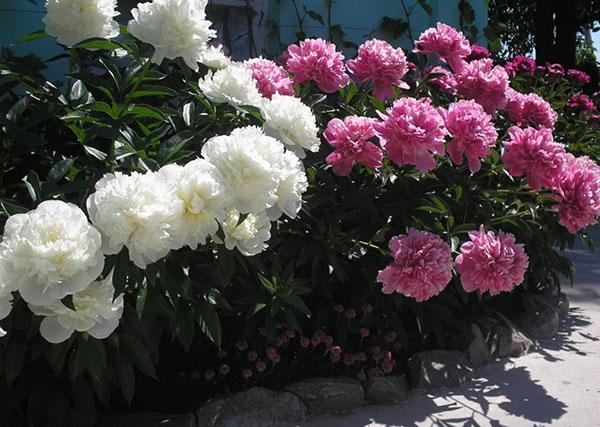Peony feeding: using an effective technique
 Mid-May and all gardeners are in anticipation of the exuberant flowering of their plants. It is at this moment that feeding the peony is the most necessary action. Mineral fertilizers serve as a breeding ground for a young culture, which may have suffered from anomalous natural phenomena. Skillful florists have found one tricky way to carry out the procedure most effectively.
Mid-May and all gardeners are in anticipation of the exuberant flowering of their plants. It is at this moment that feeding the peony is the most necessary action. Mineral fertilizers serve as a breeding ground for a young culture, which may have suffered from anomalous natural phenomena. Skillful florists have found one tricky way to carry out the procedure most effectively.
Vegetable plants, as well as berry bushes, are recommended to be fertilized with organic substances: rotted manure or compost. But for flowers, it is quite normal to use mineral complexes.
Peony feeding: a thoughtful choice of fertilizers
This culture has a very deep root. Those who dug up its bushes know that the rhizomes penetrate deep to 50 cm or more. Therefore, simply scattering beautiful granules over the entire area of the planting circle is not an option. After all, in direct contact with chemicals, shoots often "burn". As a result of burns, their growth slows down, because now they will have to spend their energy on rehabilitation. For this reason, a more humane way is needed. So, with the help of a shovel holder, recesses are made around the bush:
- about 30 cm recede from the center;
- deepen the stick by 15 cm;
- make up to 3-4 holes along the perimeter.
Now it remains only to choose a nutritious elixir for feeding the peony. In the spring, it is better to use complex fertilizers, which include:
- nitrogen and its compounds (up to 25%);
- potassium - 26% (makes flowering more lush);
- phosphorus - 12% (helps to gain buds).
Moreover, in the composition of such products, but only in small quantities, there are trace elements necessary for plants: calcium, sulfur, iron and manganese. Thanks to such feeding, peonies will bloom much longer, and their foliage will acquire a rich green hue.
At the end of summer, it is recommended to consolidate the result by adding phosphorus fertilizers. The procedure will serve as a safe investment that will ensure amazing blooms for the next year. As a result, the plant will be able to establish many healthy buds.
Technical highlights
Further, 1 teaspoon of dry matter is added to each hole and sprinkled with earth. Top dressing, preferably after rains. If the spring turned out to be sultry, then the site is abundantly shed before feeding. Over time, the holes made will tighten, and the mineral fertilizers will dissolve. Thus, the soil is saturated with nutrients, which the culture absorbs by its suction roots.
The result of such an unusual feeding of peony will be luxurious buds that enchant with their appearance and aroma every caring passer-by.